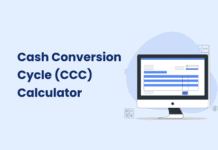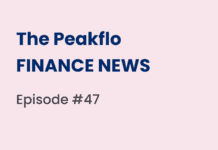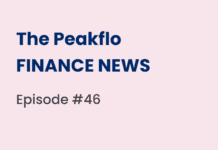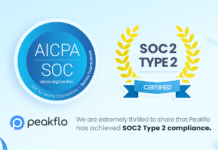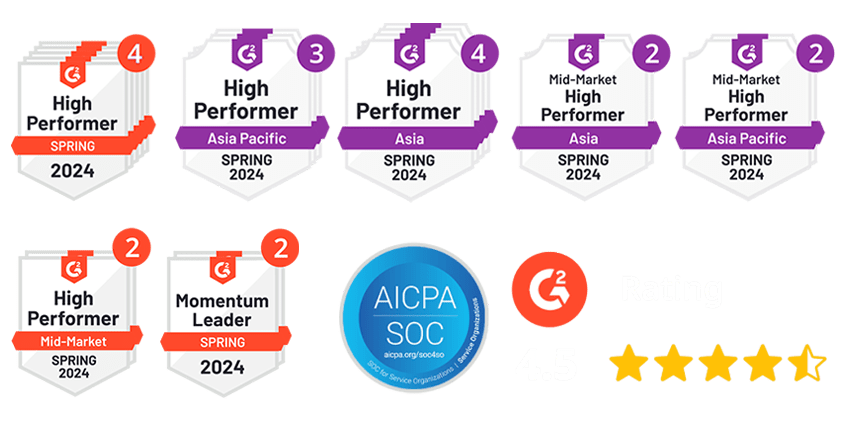Managing invoices should not feel like a constant battle. Yet, many large enterprises struggle with invoice discrepancies, delayed approvals, and payment errors. When vendors send invoices that do not match purchase orders (PO), finance teams spend hours chasing missing details, fixing mismatches, and preventing overpayments.
That is where the 2-way match and 3-way match come in. These two processes help verify invoices before payment, but they are not the same. Choosing the wrong method can lead to fraud risks, compliance issues, and financial losses.
So, which one is right for your business? And how can automation make the process smoother? Let us break it down.
Understanding Invoice Matching
Invoice matching is the process of verifying an invoice before payment. It ensures that the amount billed matches what was agreed upon, preventing overpayments and fraud. Large enterprises deal with thousands of invoices every month, making accuracy a challenge. A single mismatch can delay vendor payments, strain relationships, and cause compliance issues.
2-way match and 3-way match compare documents to catch errors before processing payments. A 2-way match checks the invoice against the purchase order, while a 3-way match adds an extra step by verifying received goods or services.
Suppose a procurement manager at a manufacturing company orders 500 units of raw materials from a vendor. The purchase order states that each unit costs $10, bringing the total to $5,000.
- With a 2-way match, the accounts payable team checks the invoice against the purchase order. If everything matches, the payment is approved.
- With a 3-way match, they also verify the goods received. If only 450 units arrive, payment is adjusted accordingly.
Matching invoices correctly prevents financial losses and strengthens vendor relationships. However, choosing the right method depends on the business’s needs.
What is 2-Way Matching? Process, Steps, and Common Use Cases
2-way matching is a quick way to check if an invoice is correct before paying. It helps businesses make sure that the vendor’s invoice matches the purchase order. If there’s a mistake, the system flags it for review. This prevents overpayments and incorrect charges.
How 2-Way Matching Works?
The process compares two key documents:
- Purchase Order – A document that lists the agreed prices, quantities, and payment terms.
- Invoice – A bill from the vendor requesting payment.
If both documents match, the invoice is approved. If something doesn’t align, the accounts payable team investigates it before processing the payment.
Steps in 2-Way Matching
Here is how a 2-way matching process works:
- Invoice Received – The vendor sends an invoice for the goods or services.
- PO Check – The finance team compares the invoice with the purchase order.
- Approval or Review – If everything matches, the payment moves forward. If not, the invoice is flagged.
- Payment Processing – Once confirmed, the company releases payment based on the agreed terms.
3-Way Matching Explained: How It Works, Key Steps, and Best Use Cases
3-way matching adds another layer of verification to invoice processing. It checks if the invoice, purchase order (PO), and receipt of goods all match before approving payment. This extra step prevents fraud, payment errors, and disputes with vendors.
How 3-Way Matching Works?
This process compares three key documents:
- Purchase Order – Lists the approved items, quantities, and prices.
- Invoice – The bill sent by the vendor requesting payment.
- Goods Receipt Note (GRN) – Confirms the actual quantity and condition of the items received.
If all three documents match, the payment is approved. If there’s a mismatch, the accounts payable team investigates before releasing funds.
Steps in 3-Way Matching
Here is how a 3-way matching process works:
- Invoice Received – The vendor submits an invoice for the goods delivered.
- PO Comparison – The finance team checks if the invoice details match the purchase order.
- Goods Receipt Verification – The team confirms that the correct quantity and quality of items were received.
- Approval or Review – If everything aligns, the payment moves forward. If discrepancies appear, the invoice is flagged.
- Payment Processing – Once verified, the company releases the payment.
Key Differences Between 2-Way and 3-Way Matching
Both 2-way matching and 3-way matching help businesses verify invoices before making payments. But they serve different purposes. One focuses on quick approvals, while the other adds an extra layer of security for physical goods. Choosing the right approach depends on what’s being purchased and the level of control needed.
Here are the main differences between the two methods:
| Feature | 2-Way Matching | 3-Way Matching |
| Documents Compared | Invoice vs. Purchase Order | Invoice vs. Purchase Order vs. Goods Receipt |
| Purpose | Ensures correct pricing and quantity | Confirms pricing, quantity, and physical receipt of goods |
| Best For | Services, subscriptions, simple purchases | Physical goods, inventory, high-value transactions |
| Risk Level | Lower risk of fraud or disputes | Higher risk, requires extra validation |
| Processing Time | Faster approval | More steps, slightly longer process |
Let us clarify the concept further through the following example scenarios:
- 2-Way Matching in Action
A company subscribes to an annual software service. The purchase order states $12,000 for a one-year license. When the invoice arrives, accounts payable checks it against the PO. If the amount matches, payment is approved instantly. No extra verification is needed since there’s no physical delivery.
- 3-Way Matching in Action
A retailer orders 1,000 units of electronics from a vendor. The PO confirms the price and quantity. When the invoice arrives, the accounts team checks it, but before approving payment, they verify the goods receipt. If only 950 units arrive, the team adjusts the payment or flags the issue with the vendor.
Benefits and Challenges of Each Matching Type
Choosing between 2-way and 3-way matching affects how quickly and safely a business processes invoices. Each method offers unique benefits and challenges depending on what is being purchased. Understanding these differences can help a company make the best choice for smooth operations and fewer errors. Here we go.
- Efficiency and Risk Mitigation in Financial Operations
Both methods help businesses catch mistakes before they pay invoices. 2-way matching is faster, while 3-way matching offers more control over physical deliveries.
Benefits of 2-Way Matching:
- Faster payments – Only compares invoices to purchase orders.
- Less effort – Accounts payable teams spend less time checking.
- Good for services – Ideal for subscriptions and services without physical items.
Benefits of 3-Way Matching:
- Better fraud prevention – Verifies that goods were received before paying.
- Less risk – Prevents overpaying for missing or damaged items.
- Great for inventory – Perfect for businesses that buy goods in large amounts.
- Challenges in the Process and Fraud Risks
While both methods help, each has its challenges. 2-way matching can be fast, but it doesn’t catch missing goods. 3-way matching can slow things down with extra steps but helps avoid bigger problems.
Challenges with 2-Way Matching:
- Does not check if items were delivered.
- More room for fraud if goods are missing but payment is still made.
Challenges with 3-Way Matching:
- Takes more time due to the extra check for received goods.
- Needs coordination between more departments—finance, purchasing, and warehouses.
Each company needs to decide which method works best for their needs. 3-way matching is perfect for physical goods and inventory, while 2-way matching works well for services and recurring costs.
- Importance of Aligning with Business Needs
The right matching method depends on your business and the type of transaction. 2-way matching is best for services or software where nothing physical is being delivered. 3-way matching is necessary for purchases of inventory where you need to confirm delivery.
Automation tools can help companies apply the right process automatically. These tools can check for errors, flag discrepancies, and make the whole process faster. Using the right system reduces mistakes, avoids fraud, and helps businesses stay on top of their finances.
By choosing the right matching process, companies keep things running smoothly while maintaining accurate payments and strong vendor relationships.
Selecting the Right Matching Process
Choosing between 2-way matching and 3-way matching depends on the purchase and how much control is needed. Some businesses need speed and efficiency, while others require detailed checks to avoid mistakes. Here is how you can plan it:
- When to Use 2-Way Matching
2-way matching works well for purchases that don’t need verification of physical goods. It speeds up the process and keeps things moving.
Large businesses often use it for:
- Software subscriptions and SaaS
- Consulting, marketing, and legal services
- Office supplies and routine purchases
- Utility bills and other regular costs
These purchases don’t involve deliveries, so checking the invoice against the purchase order is enough to confirm everything is correct.
- When to Use 3-Way Matching
3-way matching is important for purchases that involve physical goods. It ensures that vendors are only paid for what’s received.
Businesses use this method for:
- Manufacturing materials and equipment
- Inventory and retail purchases
- Construction supplies and hardware
- Large shipments and wholesale goods
This extra check helps prevent overpayments, fraud, and missing items. It also improves vendor trust by confirming they’re paid for what they delivered.
Some businesses use both methods depending on the type of transaction. For large or bulk orders, 3-way matching adds extra security. For smaller, regular payments, 2-way matching keeps things fast.
The Role of Automation in Enhancing Matching Processes
Automation is changing how invoice matching works. It makes the process faster and more accurate. Both 2-way matching and 3-way matching get better with automation. It reduces the need for manual checks and helps prevent mistakes. Here is how automation improves the overall AP process:
- Faster and More Efficient
Automation works quickly. It can compare the purchase order, invoice, and receipt in real-time. This speeds up invoice management and approvals and gets payments made faster.
- Fewer Mistakes
Humans can make errors, especially when checking many invoices. With automation, the system checks documents automatically. This reduces the chance of mistakes and makes everything more reliable.
- Detects Fraud Quickly
Automation helps catch fraud early. The system looks for anything that doesn’t match, like an invoice for goods that weren’t delivered. This way, issues can be found before payment is made.
- Better Tracking and Transparency
Automated systems keep track of everything. They create an audit trail, which shows what happened with each invoice. This helps managers easily see the status and ensures everything follows the rules.
- Can Handle More Work
As a business grows, the number of invoices increases. Automation can handle many invoices without problems. It helps businesses keep up without needing extra staff.
- Stronger Vendor Relationships
Automation helps businesses pay vendors on time. This creates trust with vendors, leading to better deals and possible discounts. It also avoids delays that can harm relationships.
- Easier to Follow Rules
Automation ensures that invoices are always checked the same way. It follows the company’s matching rules and helps businesses stay compliant with laws and regulations.
How Peakflo Helps with 2-Way and 3-Way Matching to Streamline Your AP Processes?
Managing invoices can be a challenge, especially when dealing with 2-way and 3-way matching manually. It is time-consuming, prone to errors, and can delay payments. But with Peakflo’s AI-powered solutions, businesses can streamline their entire accounts payable (AP) process, ensuring accuracy, efficiency, and fraud prevention.
Here is how Peakflo transforms your invoice matching process:
Peakflo simplifies 2-way matching by automatically comparing purchase orders (POs) and invoices. With a 95%+ first-pass match rate, the AI matches POs to invoices seamlessly, flagging errors, warnings, and close matches. This saves your AP team valuable time and reduces manual effort by 50 man-hours per month for every 100 invoices.
For 3-way matching, Peakflo takes it a step further. It ensures that goods receipts are also considered, automatically verifying whether the goods or services were received as per the PO. No more wasting time on line-item checks, mismatches, or missing items. Peakflo’s intelligent system ensures all three documents align perfectly, reducing payment errors and fraud risks.
- Effortless PO Matching, Even Without PO Numbers
Peakflo’s Smart PO Matching works without the need for a PO number on the invoice. Even if the vendor forgets to include it, Peakflo’s AI scans the invoice and automatically links it to the related PO. This intelligent feature catches discrepancies like unit price mismatches, different units, or currency issues, ensuring all details align, even if the vendor’s descriptions or language vary.
- Advanced Tolerance-Based Matching
Every business has slight differences in pricing or terms, but these can slow down the matching process. Peakflo helps by allowing your team to set tolerance thresholds for unit price discrepancies or other minor variations. This feature ensures that smaller, acceptable differences are overlooked automatically, speeding up the matching process and making it much smoother for both your team and vendors.
- Eliminate Manually Mapping Custom Fields
Peakflo reduces the manual work of updating and matching custom fields between invoices and POs. With automatic custom field mapping, Peakflo aligns fields based on the PO’s data, even down to the line item level, eliminating the need for constant manual input and ensuring a seamless experience.
- Vendor Portal for Seamless Collaboration
Peakflo’s vendor portal makes it easy for suppliers to access POs, issue invoices against them, track payment status, and communicate with your team. This self-serve platform empowers your vendors and gives them full visibility into the process, reducing the need for constant follow-up and improving relationships.
Conclusion
Getting invoices right is key to running a smooth business. Whether you’re using 2-way matching for simple purchases or 3-way matching for more complex orders, making sure everything lines up helps keep your finances in check and your vendor relationships strong. But doing this manually can lead to mistakes, delays, and frustration.
With Peakflo’s automated matching, your business can save time, reduce errors, and spot issues before they become bigger problems. From 2-way and 3-way matching to clear communication with vendors, Peakflo ensures everything runs smoothly, so you can focus on growing your business.
Want to see how it works? Book a demo tour today and find out how Peakflo can simplify your AP process.




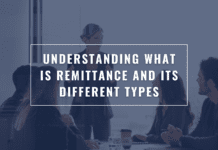




![Why AI Sales Calls Are Making Good Sales Reps Even Better [2025 Guide] ai sales calls](https://cdn-kmjmp.nitrocdn.com/YvtqmrsiHUxqerlSiZgbfzqqTARWTElr/assets/images/optimized/rev-a4aafe3/blog.peakflo.co/wp-content/uploads/2025/09/65168cf6-3001-4733-8cbc-12d5684cf449-218x150.webp)










